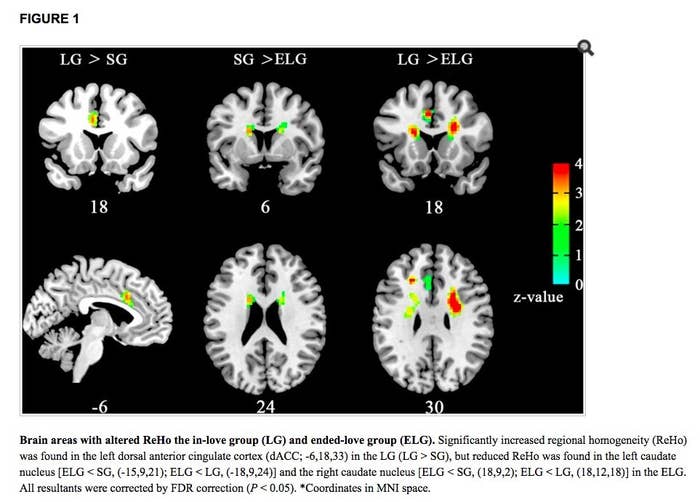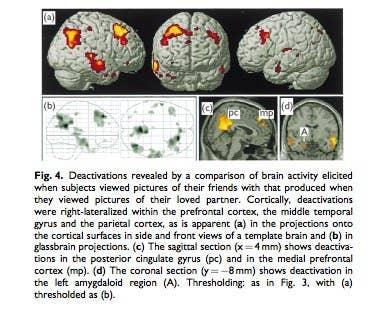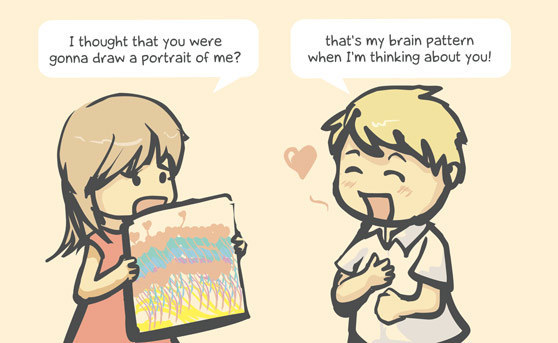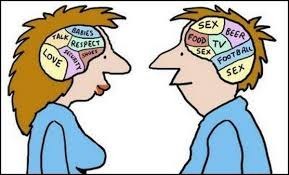1. There is a large increase in activity across the brain, specifically in areas associated with dopamine (the happy hormone) and oxytocin (the love hormone)

2. Not only do brain regions become more active, but the connections between certain regions also become more active.

3. The deactivation of some brain regions causes recklessness

4. The alteration in one’s secretion of hormones causes love to be both obsessive and addictive

5. There are differences between the brains of men and women who are in love

6. According to the brain, love is a state of motivation rather than an emotion
Psychologists define romantic love as a desire to enter or maintain a close relationship with a specific other person. Recent findings of the studies described earlier, however, suggest that the localization of romantic love within the subcortical reward, motivation and emotion systems in the human brain leads to the conclusion that love is a goal-directed drive with predictable effects of cognitive behavior rather than a pure emotion. Further, results of one of those studies suggests that love uses subcortical reward and motivation systems to focus on a specific individual, which suggests that there is strong motivation to win a specific mating partner. Thus, rather than defining love as an emotion, it can be defined as a motivation state in which one is motivated to be with an specific individual.
Interestingly, however, studies have also shown that one can be in lust with one person while in love with another. Both of these are addictive and affect the same parts of the brain, but over time the differences between the two become more significant.
7. Being dumped has affects that make it harder to let go
In her studies on the brain in love, Helen Fisher also looked at the brains of those who had been recently dumped from relationships with someone who they had admitted to being in love with. She found that the same regions that are active in the in love brain are still active in the recently dumped brain, which makes it harder to forget the person, and rather love them more. Further, the NAC seemed to become more active, which is associated with measuring ones gains and losses, as well as taking risks. There was activity in the brain regions that are associated with deep attachment to another individual, with the result that, as Fisher described, the brain circuit for reward is working and you are feeling intense energy, focus, motivation and willingness to risk it all for a mate, but these feelings go unanswered, making it harder to let go of the other individual.
Sources: Song, H., Zou, Z., Kou, J., Liu, Y., Yang, L., Zilverstand, A., … Zhang, X. (2015). Love-related changes in the brain: a resting-state functional magnetic resonance imaging study. Frontiers in Human Neuroscience, 9, 71. http://doi.org/10.3389/fnhum.2015.00071 Bartels A., Zeki S. (2000). The neural basis of romantic love. Neuroreport 11 3829–3834 10.1097/00001756-200011270-00046 Acevedo B. P., Aron A., Fisher H. E., Brown L. L. (2012). Neural correlates of long-term intense romantic love. Soc. Cogn. Affect. Neurosci. 7 145–159 10.1093/scan/nsq092 Fisher H. E. (1998). Lust, attraction, and attachment in mammalian reproduction. Hum. Nat. 923–52 10.1007/s12110-998-1010-5 Fisher H. E., Aron A., Brown L. L. (2006). Romantic love: a mammalian brain system for mate choice. Philos. Trans. R. Soc. B Biol. Sci. 361 2173–2186 10.1098/rstb.2006.1938 Fisher H. E., Brown L. L., Aron A., Strong G., Mashek D. (2010). Reward, addiction, and emotion regulation systems associated with rejection in love. J. Neurophysiol. 104 51–60 10.1152/jn.00784.2009 Arthur Aron, Helen Fisher, Debra J. Mashek, Greg Strong, Haifang Li, Lucy L. Brown Journal of Neurophysiology Published 1 July 2005 Vol. 94 no. 1, 327-337 DOI: 10.1152/jn.00838.2004 The Brain in Love. Prod. Helen Fisher. http://Ted.com. N.p., Feb. 2008. Web. DiSalvo, David. "What Neuroscience Tells Us About Being in Love." Psychology Today. Psychology Today, n.d. Web. 29 Feb. 2016. Zeki, S. "The Neurobiology of Love." Minireview The Neurobiology of Love (n.d.): n. pag. May 2007. Web.

